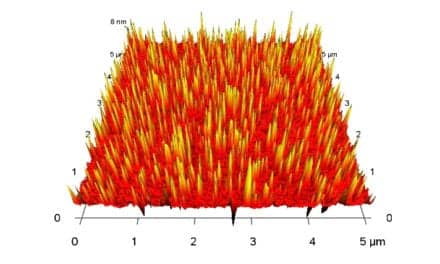Summary: Researchers identified 27 protein biomarkers in blood serum that can predict cardiomyopathy risk in pediatric cancer survivors treated with anthracycline chemotherapy.
Takeaways:
- Biomarker Panel Discovery: A panel of 27 proteins measured in blood serum was found to accurately predict cardiomyopathy risk in 38 out of 46 childhood cancer survivors.
- Advancing Early Detection: The study highlights the potential of using a simple blood test to identify subclinical cardiomyopathy, which is currently challenging with standard methods like echocardiograms.
- Future Applications: St. Jude LIFE, a comprehensive cohort study, aims to expand biomarker analysis to nearly 5,000 individuals, exploring risks for other health outcomes like diabetes and second cancers.
Early disease detection is beneficial for securing the best possible outcomes for patients. But finding noninvasive, effective ways to predict disease risk is a tremendous challenge. Findings from scientists at St. Jude Children’s Research Hospital are showing promise for assessing cardiomyopathy risk in childhood cancer survivors.
Assessing Heart Disease in Pediatric Cancer Patients
Heart disease is a well-established late effect for pediatric cancer survivors treated with anthracycline chemotherapy. The researchers identified a panel of 27 proteins as biomarkers of cardiomyopathy risk when measured in blood serum. The study, which used data from the St. Jude Lifetime Cohort (St. Jude LIFE), accurately predicted risk in 38 of 46 survivors, half with and half without cardiomyopathy. The findings were published today in JACC: CardioOncology.
While highly effective for the treatment of solid and hematological pediatric cancers, anthracycline chemotherapy drugs such as doxorubicin are well-known to increase the risk of cardiomyopathy — heart muscle disease. Patients who receive anthracycline treatment can expect a two-to-five-time higher chance of developing heart disease with five-year survival rates of less than 50% after diagnosis. Current methods used to assess cardiomyopathy risk in survivors, such as routine echocardiograms, are less effective for early detection, with diagnosis usually occurring past the point of curative treatment.
Recognizing the need for an accurate and affordable prediction tool for cardiomyopathy, Yadav Sapkota, PhD, St. Jude Department of Epidemiology & Cancer Control, sought to leverage the routine blood test. “We already measure proteins in regular lab tests, so this test, using circulating biomarkers, can be done as easily — a simple blood sample is all that’s needed.”
“The goal is to more accurately identify asymptomatic people who are more likely to develop cardiomyopathy as they become survivors of childhood cancer and then grow into adulthood,” he added.
Further Reading
A Robust Panel to Detect Preclinical Cardiomyopathy
Sapkota’s team examined participants of the St. Jude LIFE cohort. This ongoing study aims to comprehensively document the lifetime impact of pediatric cancer through retrospective and prospective data collection and analysis. The researchers matched 98 survivors with cardiomyopathy with a comparable cardiomyopathy-free group.
The goal was to identify “subclinical” cases of cardiomyopathy before symptoms arise. “Seventy-five of our samples presented with cardiomyopathy, but they didn’t have symptoms — what we call subclinical based on reduced heart function,” Sapkota explained. “We looked into over 800 proteins in those patients who didn’t have symptoms yet, and we found 27 proteins that were differentially expressed in that group.”
The team investigated if this subset of proteins could be used to predict the risk of severe disease in an independent sample of survivors. “If we can use those proteins to predict who is likely to develop severe outcomes, we can then go back to asymptomatic patients or even those who don’t have any reduced cardiac function and make a prediction if this person is likely to develop severe outcome down the road.”
Based on the pilot study, the expansion of the research is ongoing. “The plan is to assess circulating biomarkers for everybody in St. Jude LIFE — almost 5,000 individuals,” Sapkota says. “And while cardiomyopathy is something we started on, we aim to evaluate other outcomes, such as diabetes, second cancers and many others. It’s going to be a great resource.”
Featured image: Using data from the St. Jude Lifetime Cohort (St. Jude LIFE), Yadav Sapkota, PhD, St. Jude Department of Epidemiology and Cancer Control, designed a 27-protein model capable of accurately estimating treatment-related cardiomyopathy risk in pediatric cancer survivors. Photo: St. Jude Children’s Research Hospital




